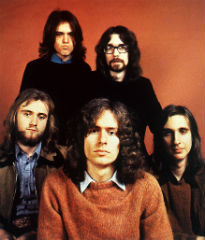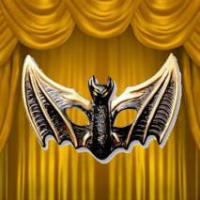mechanical movement
“FLOWERS” ON THE ROCK MUSIC CLUB
 The Flowers group has earned its place in history, if only because it has become one of the first musical groups to bring rock to the stage of the Soviet Union. All Soviet non-format within the framework of mass pop culture began precisely with this group. Dozens of famous musicians and several generations of loyal fans grew up on the work of “Flowers”.
The Flowers group has earned its place in history, if only because it has become one of the first musical groups to bring rock to the stage of the Soviet Union. All Soviet non-format within the framework of mass pop culture began precisely with this group. Dozens of famous musicians and several generations of loyal fans grew up on the work of “Flowers”.
Influenced by Woodstock
Rock group “Flowers” appeared in 1969 thanks to the efforts of the student of the Institute of Foreign Languages Stas Namin – the grandson of the famous Soviet party leader Anastas Mikoyan. Stas early became interested in rock music, and gathered his first team at the Suvorov School in 1964. The hippie movement could not remain aloof from the creative nature of Namin, and shortly after the legendary festival, Stas Namin’s group “Woodstock”, he founded a group called “Flowers”. Its first participants, except for Stas himself, were fanatically in love with music Vladimir Chugreev, Vladimir Solovyov and vocalist Elena Kovalevskaya. Continue reading
Bard Bulat Okudzhava
 Many legends are associated with the name of Bulat Okudzhava. No wonder, because such personalities appear in the poetic and musical world infrequently and deservedly become legendary.
Many legends are associated with the name of Bulat Okudzhava. No wonder, because such personalities appear in the poetic and musical world infrequently and deservedly become legendary.
His poems were sorted into quotes, songs became symbolic and symbolic for the sixties, and Bulat Shalvovich himself was the brightest representative of his generation.
Unenviable childhood
It so happened in nature that the fate of talented people is full of personal tragedies, struggles, searches, wanderings and other hardships. Probably only a person who has experienced and experienced a lot can create works for ages. Only then they are filled with true meaning, deep and meaningful, penetrate the souls and find a response there. Such was the fate of Bulat Okudzhava. Continue reading
A BEAUTIFUL TALE WITH A DEEP MEANING IN THE SLEEPING BEAUTY BALLET
 The tale of the French writer Charles Pierrot “Sleeping Beauty”, as it turned out, hides many secrets. At least, the creators of the ballet of the same name – composer Pyotr Tchaikovsky, choreographer Marius Petipa and director of the imperial theaters Ivan Vsevolozhsky, who became the author of libretto and costumes – filled the work with hidden meaning, elusive for a superficial look.
The tale of the French writer Charles Pierrot “Sleeping Beauty”, as it turned out, hides many secrets. At least, the creators of the ballet of the same name – composer Pyotr Tchaikovsky, choreographer Marius Petipa and director of the imperial theaters Ivan Vsevolozhsky, who became the author of libretto and costumes – filled the work with hidden meaning, elusive for a superficial look.
One thing is certain with confidence: the ballet Sleeping Beauty is far from a naive tale for children.
Political motives
The director of the imperial theaters, Prince Ivan Aleksandrovich Vsevolozhsky, gave the idea to put Sleeping Beauty. Former attaché at the Russian embassy in Paris, he adored everything French and actively supported the course of Tsar Alexander III towards the rapprochement of the two countries. Continue reading




